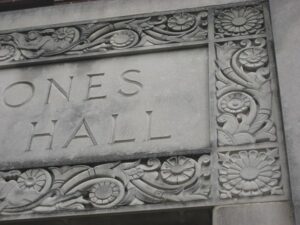Recently, I have written about the findings of the latest higher education facilities assessment from Gordian. The report shows that higher education institutions have continued their failing patterns of underfunding both campus maintenance and renovations designed to extend the useful life of campus buildings.
Lost in the analysis is the cost that gets passed along to students, who pay for neglected maintenance, late renovations, and new construction through skyrocketing tuition costs. Worse, about two thirds of college students borrow money to pay for their education-related expenses. Not only do these students bear the brunt of higher tuition costs, but also the long-term consequences of educational debt.
Institutions pay the lowest possible cost for maintenance when they perform the necessary care either on schedule or when an issue first arises. There is no cost benefit to delaying maintenance, and the cost of taking action in the future will never be lower than the cost of taking action immediately. If the goal is to minimize maintenance costs, then achieving this goal relies on prompt action.
Prompt action requires adequate budgeting, regularly updated assessments of the condition of the higher education facilities, and preventative maintenance performed as required and on time.
Although the State of Michigan – like many other states – has a policy of not funding neglected maintenance, the reality is that the State would likely be on the hook for the fallout if a tragedy that traces back to neglected maintenance were to occur at a publicly funded higher education facility.
Legislature has options for higher education facilities
The state has a few big hammers it can wield against publicly funded higher education facilities. Legislatively, it can make state funding of a higher education institution conditional on the sufficiency of an institution’s maintenance and capital budgets. In other words, WCC would not be able to get by on a $300,000 maintenance budget.
It can also pass legislation that requires state-funded higher education facilities to eliminate their maintenance backlogs by a certain date. Once an institution eliminates its backlog, the statute would bar it from accumulating a maintenance backlog in the future. Part of this approach could include extending the eligibility to create a sinking fund to the state’s publicly funded community colleges. This would create an ongoing taxpayer-authorized source of income dedicated specifically to maintenance and capital projects.
Higher education administrators have demonstrated time and time again that they are not willing to prioritize the maintenance of taxpayer funded facilities. The elected and appointed boards at these institutions have likewise demonstrated that they do not demand sufficient expenditures to permanently close the maintenance gap.
These twin failures of administration and oversight place the liability for these costs at the feet of the State of Michigan. In the case of a community college, that can unfairly distribute community college costs to taxpayers who did not agree to become part of a community college district.
I don’t think anything prevents the state from rebilling any costs it incurs on behalf of a community college district back to the taxpayers of the community college district. That’s a situation that no one wants. Until community college administrations start taking the cost of maintenance and capital improvements seriously, they’re putting all of us at risk.
Photo Credit: Michigan Municipal League , via Flickr



























